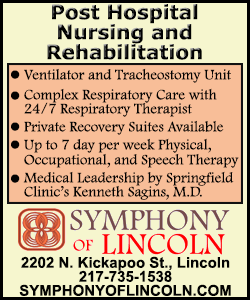|
 Researchers examined nationwide data for both deaths and
readmissions within 30 days of discharge for three common problems:
heart failure, pneumonia and heart attacks. Researchers examined nationwide data for both deaths and
readmissions within 30 days of discharge for three common problems:
heart failure, pneumonia and heart attacks.
About 17 percent of U.S. hospitals are getting punished for excess
readmissions even though they’re keeping patients alive more often
than would be expected, the analysis found.
The data came from U.S. hospitals in fiscal year 2014.
Another 16 percent of hospitals essentially get rewarded for low
readmission rates, but their patients are more likely to die in the
first month after leaving the hospital, the study also found.
“You could argue that from the individual patient’s perspective,
mortality should be weighted much higher than readmission,” said
senior study author Dr. Scott Hummel of the University of Michigan
in Ann Arbor.

“Aligning financial incentives more closely with this
patient-oriented goal would drive hospital behavior towards finding
ways to reduce post-discharge mortality,” Hummel added by email.
In 2014, U.S. hospitals could for the first time be penalized for
readmission rates that were higher than expected, and earn a
financial reward based on a mix of measures that include everything
from 30-day death rates to how well patients rated the care they
received and the hospital environment, researchers report in JAMA
Cardiology.
Under the current policy, hospitals can lose up to 3 percent of
certain Medicare payments for excess readmissions, but can recoup
only about 0.2 percent of such payments for having low mortality
rates.
If hospitals got paid less when their patients died soon after a
hospitalization, just like they get paid less when those patients
end up back in the hospital, it would be a game-changer for
one-third of hospitals, the study authors argue.
That’s because some of the hospitals that get penalized for high
readmissions are those that may actually do the best job at keeping
patients alive – and vice versa, the researchers contend.
If the penalties took both readmission and mortality into account,
the Medicare system would save the same amount of money, but
incentivize good outcomes more fairly, the researchers say.
[to top of second column] |

To calculate this, researchers developed a ratio for each hospital
based on observed and expected readmissions and mortality in the
first 30 days for heart attack, heart failure and pneumonia.
They adjusted the data for how sick each hospital’s patients were.
They didn’t adjust for patients’ socioeconomic status, which can
also affect outcomes.
The authors also call for continued improvement in risk models for
estimating patients’ risk of readmission, just like current,
well-tested models to predict their risk of death.
Other researchers too have shown there isn’t a tight link between a
hospital’s 30-day readmission rate and its 30-day mortality rate for
these conditions – suggesting that there’s more to the story when
thinking about using them as measures of hospital quality.
“It is not surprising that one measure of provider quality may not
be strongly correlated with another – we have known this to be the
case for years,” said Dr. Michael Williams, a health policy
researcher at Harvard University in Boston who wasn’t involved in
the study.
“But we must fight the instinct to measure everything and pay on
everything, lest we detract from providers' ability to provide
high-quality care,” Williams added by email. “Lack of correlations
should not trigger knee-jerk calls for more measures tied to more
bonuses and penalties.”
SOURCE: http://bit.ly/2dP9Bt9 JAMA Cardiology, online October 26,
2016.
[© 2016 Thomson Reuters. All rights
reserved.] Copyright 2016 Reuters. All rights reserved. This material may not be published,
broadcast, rewritten or redistributed.
 |